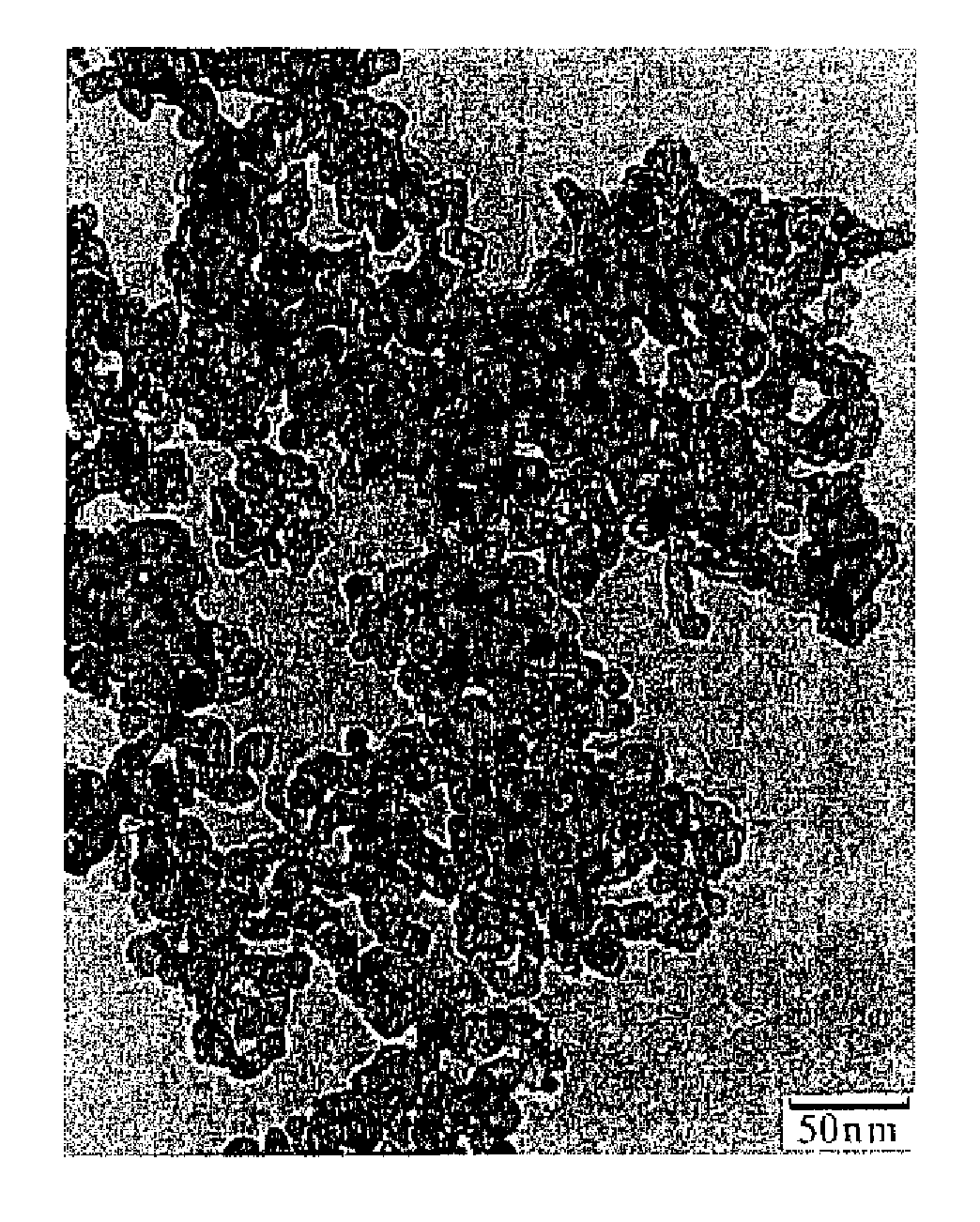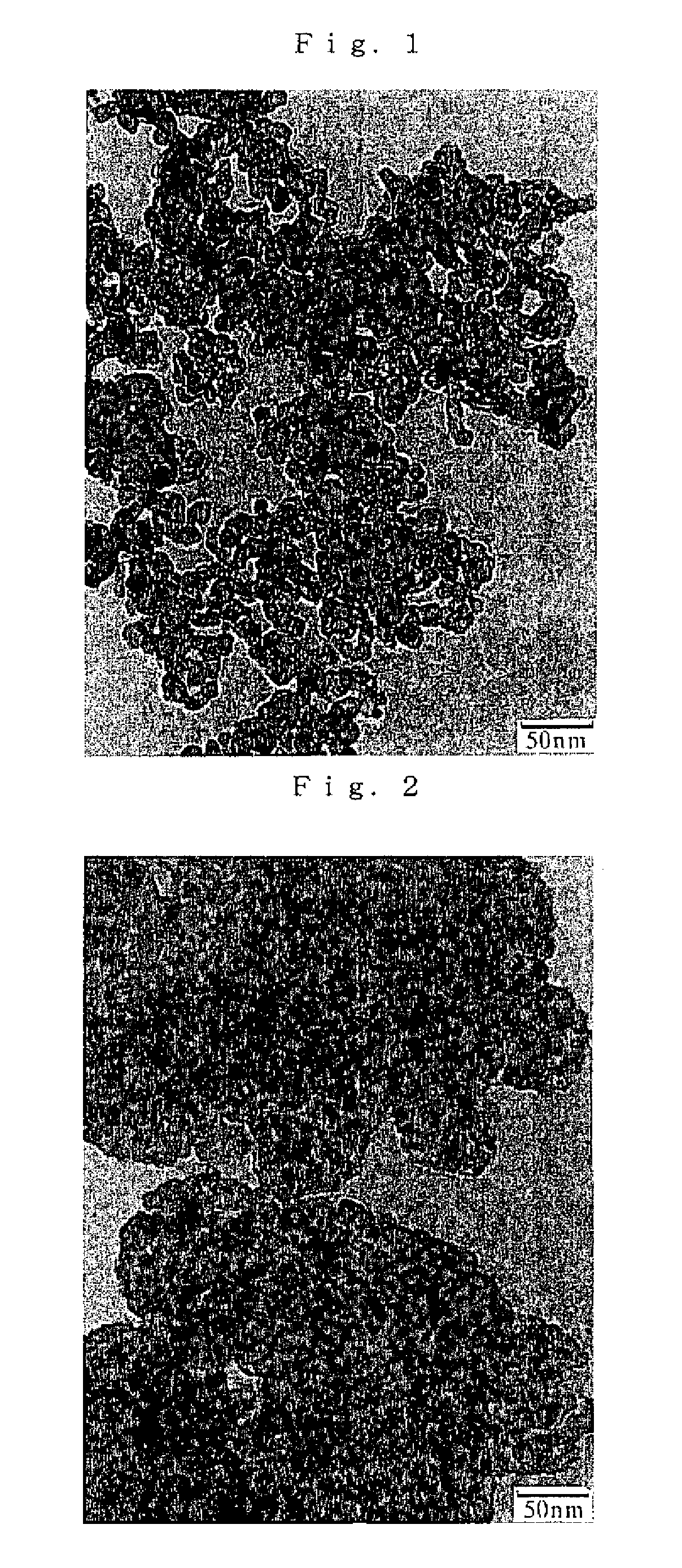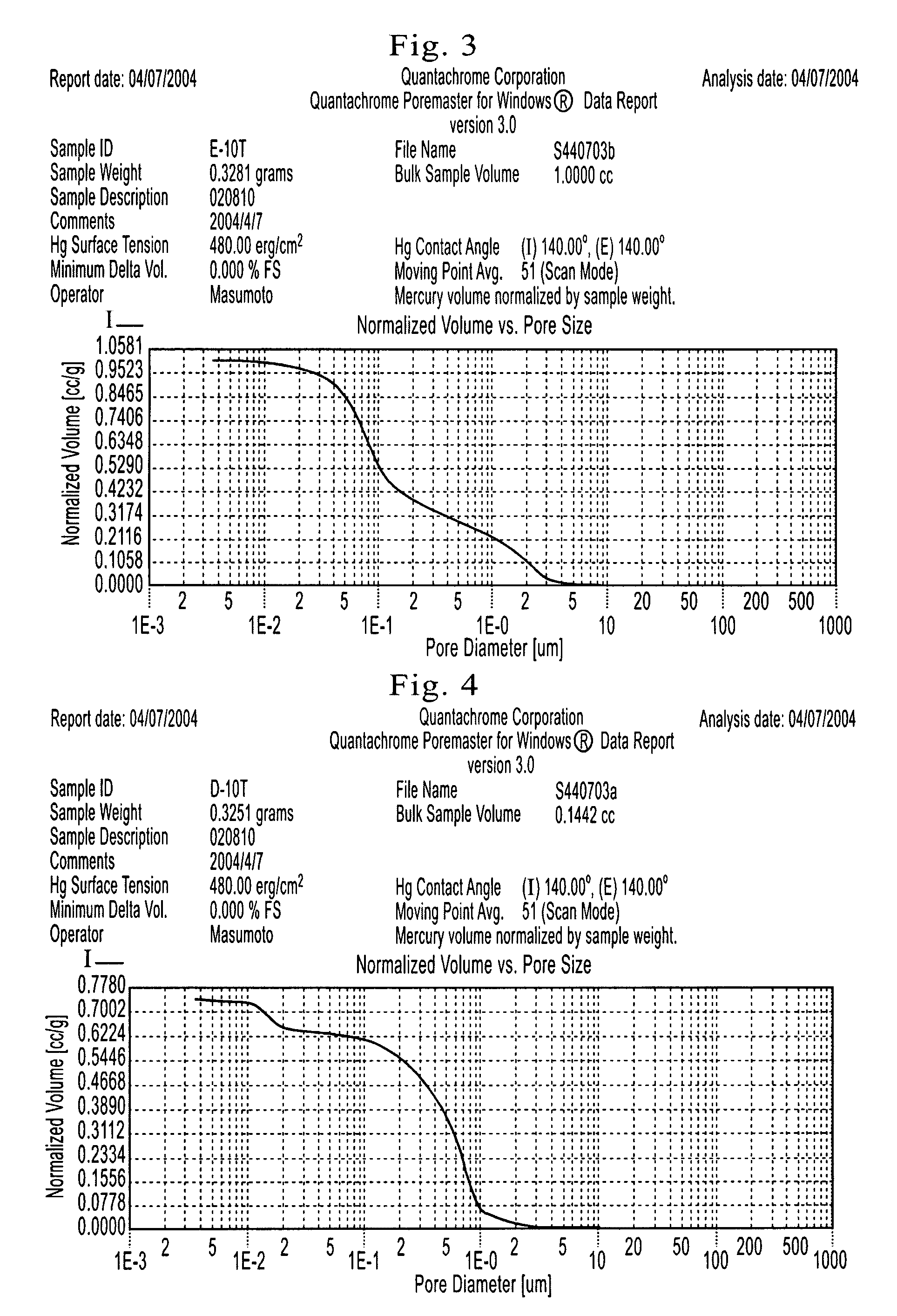Porous zirconia powder and production method of same
a technology of porous zirconia and production method, which is applied in the direction of metal/metal-oxide/metal-hydroxide catalyst, physical/chemical process catalyst, cellulosic plastic layered product, etc., can solve the problems of inability to achieve stable performance at high temperatures, and the inability of mixed oxides described in the two publications mentioned above to have adequate heat resistance at high temperatures, etc., to achieve the effect of improving the heat resistance of the total pore volum
- Summary
- Abstract
- Description
- Claims
- Application Information
AI Technical Summary
Benefits of technology
Problems solved by technology
Method used
Image
Examples
example 1
[0062]187 g of zirconium oxychloride octohydrate (72 g as ZrO2) were dissolved in ion exchange water followed by adjusting to an acid concentration of 0.67 N and ZrO2 concentration of 4 w / v % with 35% hydrochloric acid and ion exchange water.
[0063]The resulting solution was placed in an autoclave, the pressure was set to 2×105 Pa and the temperature was raised to 120° C. followed by adding 1065 g of 5% sodium sulfate (sulfating agent) at the same temperature and holding at that temperature for an additional 15 minutes. Following sulfation, the solution was allowed to cool on standing to room temperature to obtain a slurry containing basic zirconium sulfate.
[0064]210 g of cerium nitrate solution (21 gas CeO2), 20 g of lanthanum nitrate solution (2 gas La2O3) and 50 g of neodymium nitrate solution (5 g as Nd2O3) were added to the basic zirconium sulfate-containing slurry. Next, 500 g of 25% sodium hydroxide (neutralizing alkali) were added over the course of 60 minutes. Zirconium hydr...
example 2
[0067]117 g of zirconium oxychloride octohydrate (45 g as ZrO2) were dissolved in ion exchange water followed by adjusting to an acid concentration of 0.67 N and ZrO2 concentration of 4 w / v % with 35% hydrochloric acid and ion exchange water.
[0068]The resulting solution was placed in an autoclave, the pressure was set to 2×105 Pa and the temperature was raised to 120° C. followed by adding 665 g of 5% sodium sulfate (sulfating agent) at the same temperature and holding at that temperature for an additional 15 minutes. Following sulfation, the solution was allowed to cool on standing to room temperature to obtain a slurry containing basic zirconium sulfate.
[0069]450 g of cerium nitrate solution (45 gas CeO2), 30 g of lanthanum nitrate solution (3 g as La2O3) and 70 g of praseodymium nitrate solution (7 g as Pr6O11) were added to the basic zirconium sulfate-containing slurry. Next, 500 g of 25% sodium hydroxide (neutralizing alkali) were added over the course of 60 minutes. Zirconium ...
PUM
| Property | Measurement | Unit |
|---|---|---|
| diameter | aaaaa | aaaaa |
| specific surface area | aaaaa | aaaaa |
| specific surface area | aaaaa | aaaaa |
Abstract
Description
Claims
Application Information
 Login to View More
Login to View More - R&D
- Intellectual Property
- Life Sciences
- Materials
- Tech Scout
- Unparalleled Data Quality
- Higher Quality Content
- 60% Fewer Hallucinations
Browse by: Latest US Patents, China's latest patents, Technical Efficacy Thesaurus, Application Domain, Technology Topic, Popular Technical Reports.
© 2025 PatSnap. All rights reserved.Legal|Privacy policy|Modern Slavery Act Transparency Statement|Sitemap|About US| Contact US: help@patsnap.com



